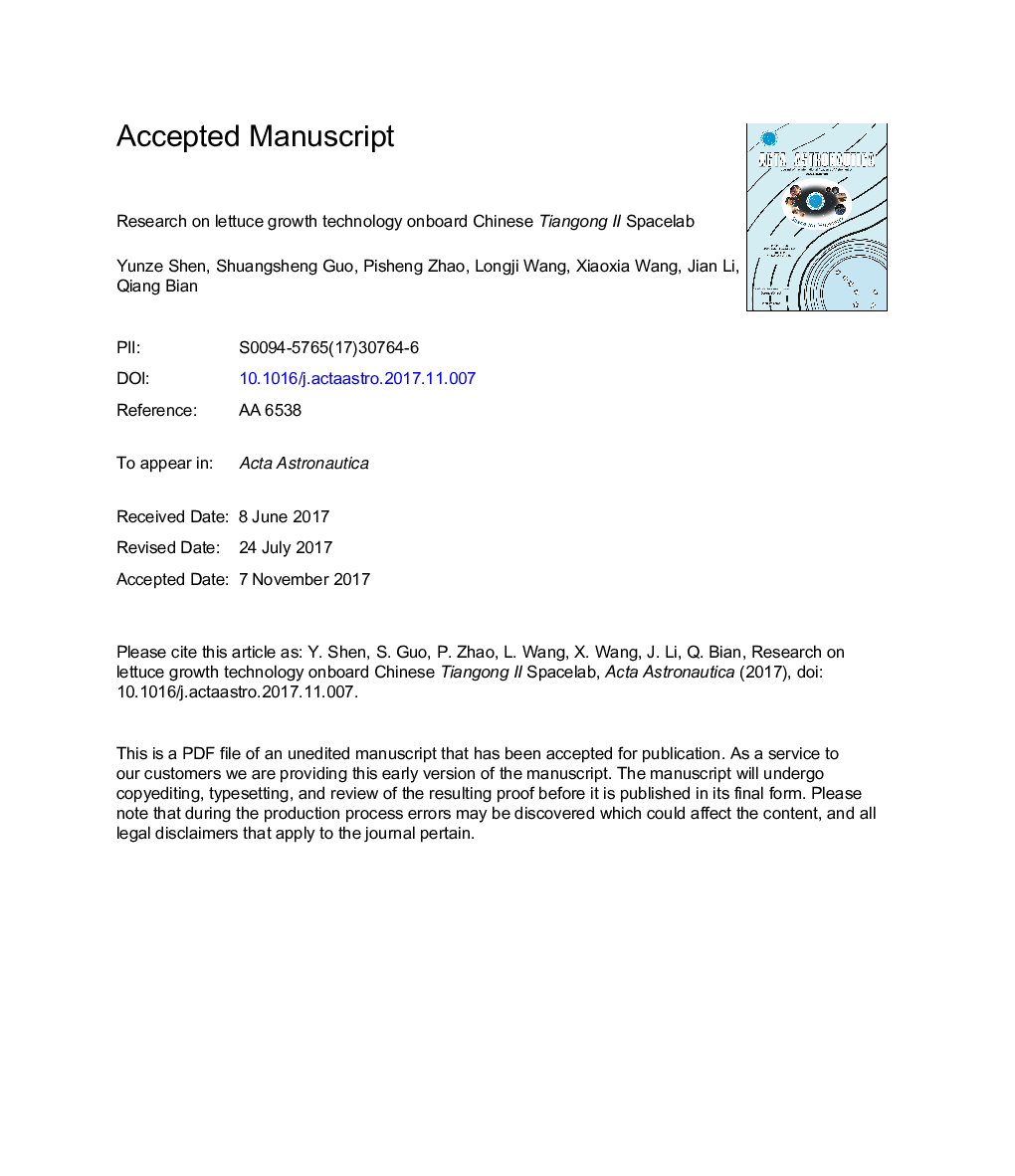| Article ID | Journal | Published Year | Pages | File Type |
|---|---|---|---|---|
| 8055695 | Acta Astronautica | 2018 | 14 Pages |
Abstract
Lettuce was grown in a space vegetable cultivation facility onboard the Tiangong â
¡ Spacelab during October 18 to November 15, 2016, in order to testify the key cultivating technology in CELSS under spaceflight microgravity condition. Potable water was used for irrigation of rooting substrate and the SRF (slowly released fertilizer) offered mineral nutrition for plant growth. Water content and electric conductivity in rooting substrate were measured based on FDR(frequency domain reflectometry) principle applied first in spaceflight. Lettuce germinated with comparative growth vigor as the ground control, showing that the plants appeared to be not stressed by the spaceflight environment. Under microgravity, lettuce grew taller and showed deeper green color than the ground control. In addition, the phototropism of the on-orbit plants was more remarkable. The nearly 30-d spaceflight test verified the seed fixation technology and water& nutrition management technology, which manifests the feasibility of FDR being used for measuring moisture content and electric conductivity in rooting zone under microgravity. Furthermore, the edibility of the space-grown vegetable was proved, providing theoretical support for astronaut to consume the space vegetable in future manned spaceflight.
Keywords
Related Topics
Physical Sciences and Engineering
Engineering
Aerospace Engineering
Authors
Yunze Shen, Shuangsheng Guo, Pisheng Zhao, Longji Wang, Xiaoxia Wang, Jian Li, Qiang Bian,
